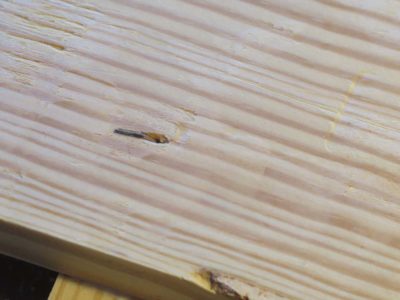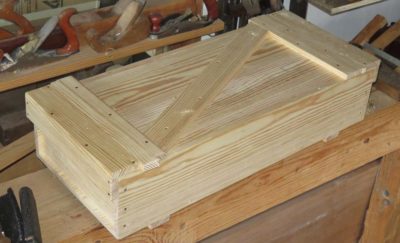Japanese Tool Box – The Lid
Perhaps the most idiosyncratic feature of the Japanese tool box form is the lid, which fits and locks into place but is easily removable for accessing the tools inside. The exact configuration of the fitting and locking arrangement is precise and fussy, and I messed it up royally.

The first step to fitting all of this together is to add cross battens to the tops of the box ends, and cross batten handles to them. Many (most?) Japanese tool boxes have these handles flush to the end boards, I prefer them to be placed at the ends of the side boards such that there is a little recess behind them for easier gripping. it’s just the incurable iconoclast in me.
The top slab fits underneath the top end battens and inside the box walls. Like the bottom of the box, the top is a slab of hand planed <5/8″ pine, but planed to a whisper fit to the inside of the box walls

Then 3/4″ thick cross battens were glued and nailed to the top slab such that one end slides underneath one of the cross battens on the box top ends, then the top slides back underneath the other end batten to be locked in place with a sliding wedge. Once again my trove of squared nails proved to be the treasure it is, as the soft nail shafts were easily crimped over without incident.

Being A COMPLETE IDJIT I attached the two lid battens in the wrong place, each shifted by 1/4″ in the wrong direction; I got the spacing of the protruding lips bass ackwards. After much fussing and fuming and legitimate self-deprecation, complete with some impolite language, I had to trim 1/4″ off of the wrong end then glue it onto the correct end with white glue and bamboo pins. It worked out just fine since it was not a stress-bearing function, but it was and remains an embarrassing learning moment.
Once I got all the fitting correct I added the traditional diagonal batten of 3/4″ stock. This serves ostensibly as both another handle for sliding and removing the top and mitigating any tendency there is for the wide slab to warp.
Two cross-batten feet completed the construction of the box itself, leaving only the fitting of some interior features.


Join the Conversation!